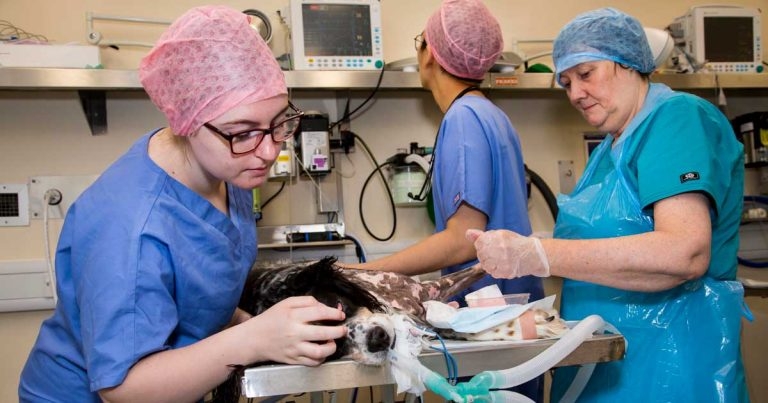7 Sept 2022
New research has suggested that only 14 dogs in every 10,000 died within two weeks of undergoing a sedative or anaesthetic procedure, though the risks are higher for older animals.

Image: © RVC.
Scientists say owners can be reassured by new research suggesting the risk of death for dogs that undergo sedation or anaesthesia procedures is around one in every 700 cases.
Academics from the RVC and the University of Manchester worked together on the latest VetCompass study, which examined data from more than 150,000 dogs over a four-year period.
It found there were 14 deaths in every 10,000 dogs, around one in every 714, although risks were higher for older animals and breeds such as Rottweilers and West Highland white terriers.
But co-author Dan O’Neill, associate professor in companion animal epidemiology at the RVC, said the findings can help owners overcome the fear of seeing their pet admitted for an anaesthetic procedure.
He said: “Decision-making based on the known can now replace fear of the unknown.”
The research was based on data from 157,318 dogs who underwent at least one sedative or anaesthetic procedure in the period from the start of 2010 to the end of 2013.
Of those, 1,396 (0.89%) died from any cause within two weeks of the final procedure dates.
However, cases where anaesthesia could not be ruled out as a contributing factor accounted for only 219 (0.14%) during the same timescale. Additionally, 159 of the deaths, accounting for 0.1% of the total sample, occurred within 48 hours of the final procedures.
The risk was also found to be even lower for neutering procedures, with only one death in 10,000 cases. But the study also found dogs aged 9 or older were 12.8 times more likely to die than those aged between 6 and 18 months, while those between 5 and 9 were at 4.9 times greater risk.
Rottweilers were reported to be at 8.1 times the risk of mixed breed dogs, while West Highland white terriers were 5.4 times more likely to die.
And longer-nosed breeds were collectively found to be at nearly four times greater risk than their mesocephalic counterparts, though brachycephalic, or flat-faced breeds, were not found to be at a higher risk.
Lead author Stephanie Shoop-Worrall, research fellow in epidemiology and data science at the University of Manchester, said: “VetCompass is an invaluable resource that has allowed the study of anaesthetic risks from dogs across the UK.
“These results can help reassure owners of the relative safety of sedation and anaesthesia in dogs, which is only getting safer over time, and can also prompt practice changes for veterinary surgeons to decrease risks further.”